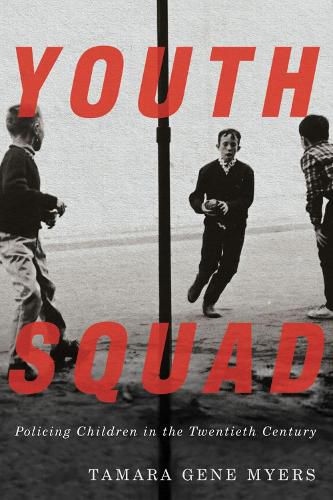Readings Newsletter
Become a Readings Member to make your shopping experience even easier.
Sign in or sign up for free!
You’re not far away from qualifying for FREE standard shipping within Australia
You’ve qualified for FREE standard shipping within Australia
The cart is loading…






This title is printed to order. This book may have been self-published. If so, we cannot guarantee the quality of the content. In the main most books will have gone through the editing process however some may not. We therefore suggest that you be aware of this before ordering this book. If in doubt check either the author or publisher’s details as we are unable to accept any returns unless they are faulty. Please contact us if you have any questions.
Starting in the 1930s, urban police forces from New York City to Montreal to Vancouver established youth squads and crime prevention programs, dramatically changing the nature of contact between cops and kids. Gone was the beat officer who scared children and threatened youth. Instead, a new breed of officer emerged whose intentions were explicit: befriend the rising generation. Good intentions, however, produced paradoxical results. In Youth Squad Tamara Gene Myers chronicles the development of youth consciousness among North American police departments. Myers shows that a new comprehensive strategy for crime prevention was predicated on the idea that criminals are not born but made by their cultural environments. Pinpointing the origin of this paradigmatic shift to a period of optimism about the ability of police to protect children, she explains how, by the middle of the twentieth century, police forces had intensified their presence in children’s lives through juvenile curfew laws, police athletic leagues, traffic safety and anti-corruption campaigns, and school programs. The book describes the ways that seemingly altruistic efforts to integrate working-class youth into society evolved into pervasive supervision and surveillance, normalizing the police presence in children’s lives. At the intersection of juvenile justice, policing, and childhood history, Youth Squad reveals how the overpolicing of young people today is rooted in well-meaning but misguided schemes of the mid-twentieth century.
$9.00 standard shipping within Australia
FREE standard shipping within Australia for orders over $100.00
Express & International shipping calculated at checkout
This title is printed to order. This book may have been self-published. If so, we cannot guarantee the quality of the content. In the main most books will have gone through the editing process however some may not. We therefore suggest that you be aware of this before ordering this book. If in doubt check either the author or publisher’s details as we are unable to accept any returns unless they are faulty. Please contact us if you have any questions.
Starting in the 1930s, urban police forces from New York City to Montreal to Vancouver established youth squads and crime prevention programs, dramatically changing the nature of contact between cops and kids. Gone was the beat officer who scared children and threatened youth. Instead, a new breed of officer emerged whose intentions were explicit: befriend the rising generation. Good intentions, however, produced paradoxical results. In Youth Squad Tamara Gene Myers chronicles the development of youth consciousness among North American police departments. Myers shows that a new comprehensive strategy for crime prevention was predicated on the idea that criminals are not born but made by their cultural environments. Pinpointing the origin of this paradigmatic shift to a period of optimism about the ability of police to protect children, she explains how, by the middle of the twentieth century, police forces had intensified their presence in children’s lives through juvenile curfew laws, police athletic leagues, traffic safety and anti-corruption campaigns, and school programs. The book describes the ways that seemingly altruistic efforts to integrate working-class youth into society evolved into pervasive supervision and surveillance, normalizing the police presence in children’s lives. At the intersection of juvenile justice, policing, and childhood history, Youth Squad reveals how the overpolicing of young people today is rooted in well-meaning but misguided schemes of the mid-twentieth century.